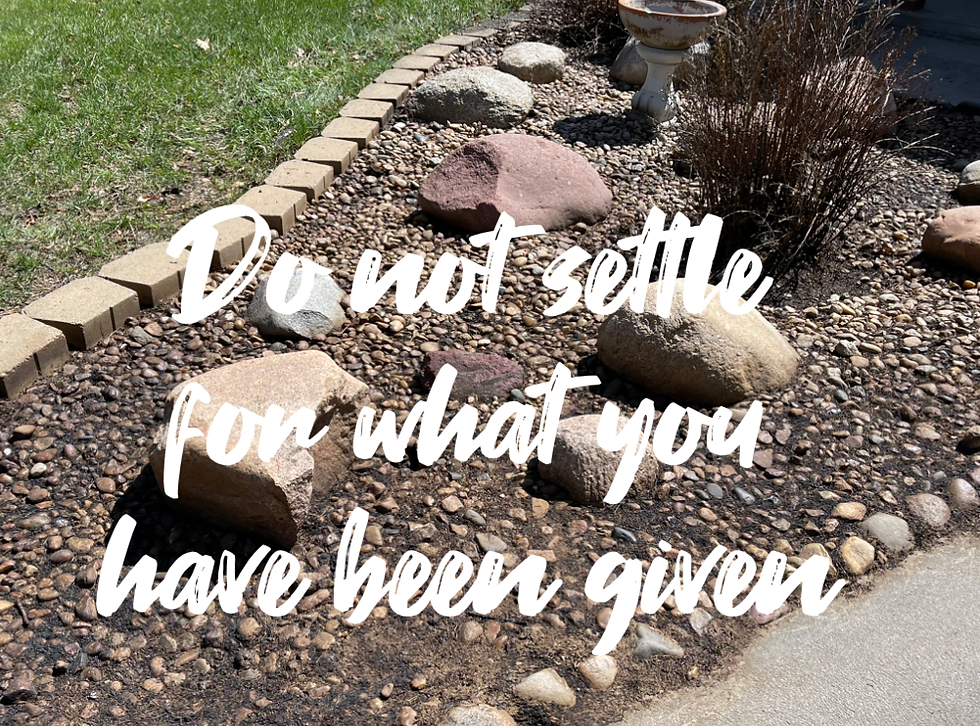Planning Sustainable Flower Beds
- Colleen Nelson

- Feb 16, 2023
- 3 min read

When planning to update existing flower beds, I recommend allowing a full year of observation before making changes. During this time, you can get a sense of what the area looks like in each season. If you are in a brand-new development and just bit, the house this year of observation can also be useful.
Location
Sun exposure – The amount and time of day the space is exposed to sun will indicate what type of flowers will do best.
Water drainage – While water is good for plants if the water does not drain you risk root rot and fungus growth that can kill plants quickly.
Drop and blow-in – If your flower bed is below a tree that drops seeds or leaves you may have weed the space more often. Same with loose grass, leaves, or other material that may blow into your flower bed on windy days.
Access to water – Lugging a watering can around to get enough water to a full flower bed is a great workout but not practical. Make sure to plan your bed around accessibility to a water source.
Selecting Plants
Number of Plants – The variety of plants you place together should be considered based on plants that thrive in similar environments. It is ideal to use an odd number to create interest.
Annual vs. Perennial – If the flower bed has easy access you may want to consider an annual that has to be re-planted each year. If you are looking for long-term growth and lower maintenance each year a perennial will be a better option.
Heights – Consider how the various heights of the plants at the peak of their growth. Create a mix of heights to allow each plant to be seen and have access to sun. You do not want taller plants creating shade for lower plants that need sunlight.
Tallest (2-3 Feet)
Mid (10 inches – 2Feet)
Low (Less than 10 inches)
Spacing – Consider the size of your flower bed and how much space each plant will need to grow healthy.
Timing
Best time for planting – Be aware of when to plant. Many plants you want to bloom in spring need to be planted the previous fall. When laying out your flower bed it will be easiest to plant it from back to front or middle toward the edge.
Consider timing of blooms - Creating a bed with plants that bloom at separate times will allow the bed to be in bloom more than one time a year.
Preparing Soil
Below lawn level – You will want your flower bed to be dug 2-3 inches below your lawn level. This helps with watering and drainage. Be sure to work the soil when moist but not wet.
Add 2-3 inches of topsoil or compost – Before planting add 2-3 inches of topsoil or compost to the bed. Plant evenly. Some people will add a protective barrier at this point and cut holes and dig a spot to place each plant. This can cut down on weeding.
Cover 3-4 inches of mulch – Once all your plants are in place add 3-4 inches of mulch. The mulch will help insulate the roots, so they are not impacted by extreme temperatures. The mulch will also hold water that the plants can draw from in dryer days.
Design
Three rows – With an odd number of distinct types of plants consider using three rows where the tallest plants are in the back/middle, mid-level plants are in the middle row, and the lowest plants are in the front/outer edge row.
Avoid even numbers – Even numbers of plants, rows, etc. Can draw attention to any imperfections if a plant is smaller than another like it. Or create a sense of imbalance.
I like to use a piece of graph paper to layout my beds before planting. This allows me to consider the number of each plant I am going to need while also laying out the design once I get them home. Let this guide you to make a change. You do not have to settle for what you have been given. You can transform your environment as far as you imagination can go.
#PlanningFlowerBeds #Sunlight #Spacing #BeOdd #Donotsettle #Letyourimaginationgo #TransformYourEnviroment #AcreageLife #AcreageLiving





Comments